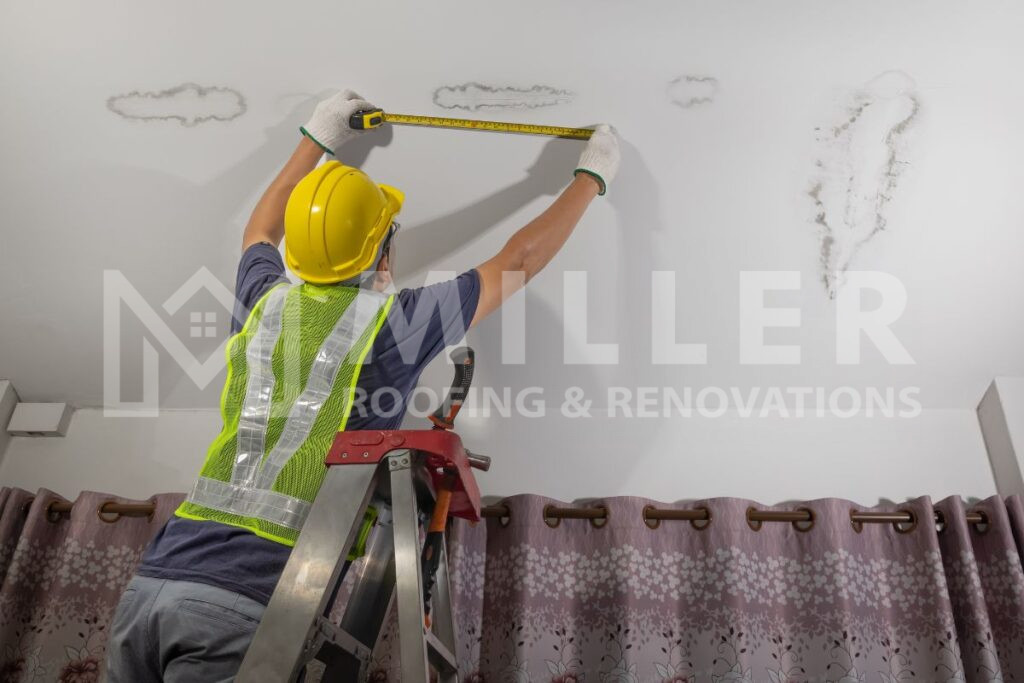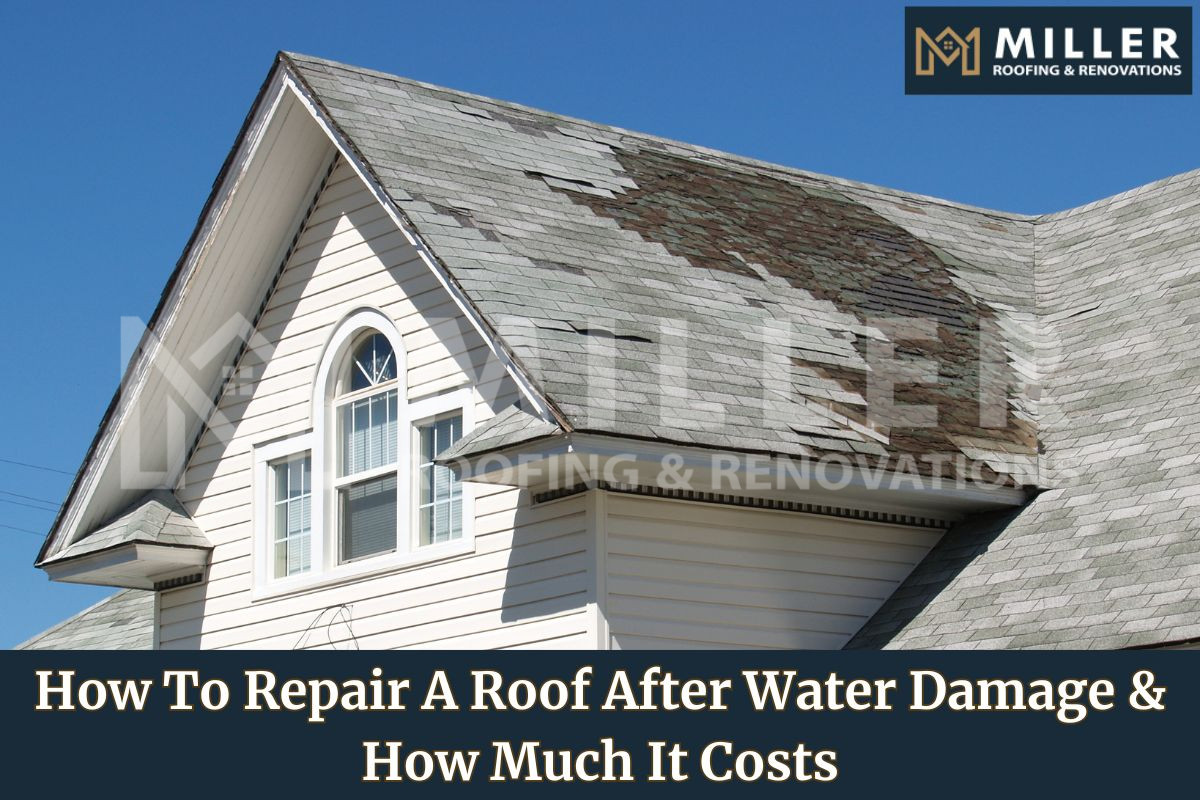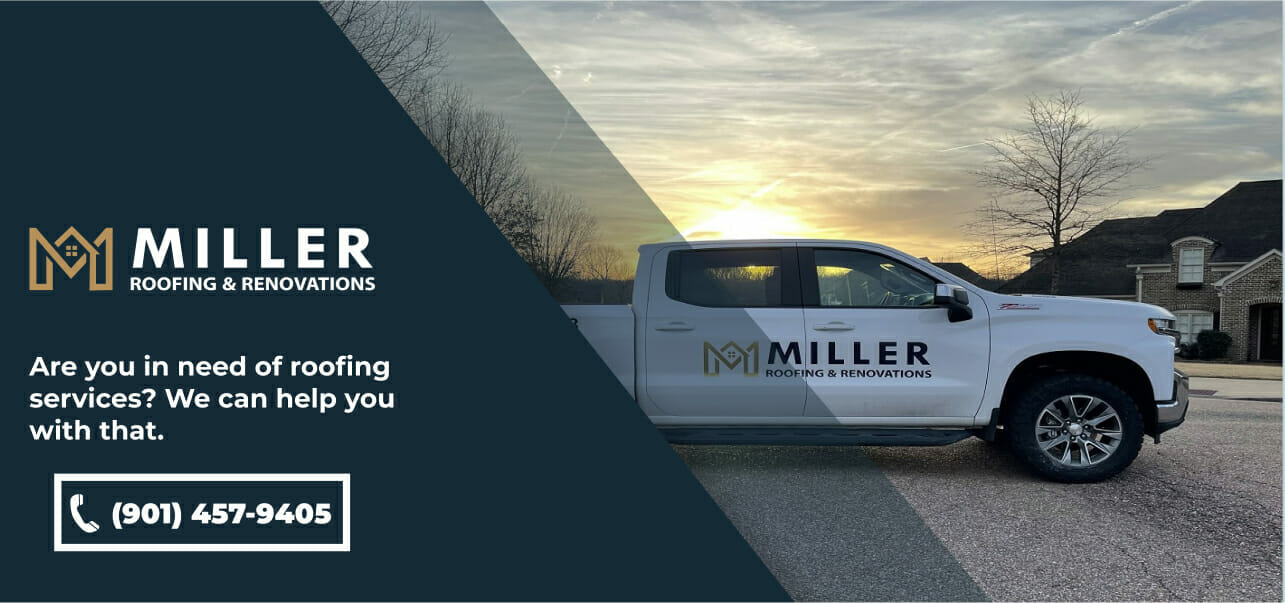A damaged roof can be a homeowner’s worst nightmare because it can lead to mold growth and other possible health risks along with structural damage. Treating water damage as soon as it occurs, whether it is the result of a severe storm or slow deterioration, is essential to avoid more damage and expensive repairs.
In this blog post, we will go through all of the associated costs and what to do to handle water damage roof repair.
What Are The Causes Of Water Damage?
Water damage can stem from various sources along a roof, and your home may experience numerous issues if water seeps through, such as giving interior floors or ceilings an unpleasant appearance. However, more serious problems can result from water damage, such as decaying wood and problems with electrical systems in your home, as well as mold, which can be harmful to your health.
Common causes of water damage include:
- Damaged or missing flashing
- Missing tiles or shingles
- Wrong materials utilized in the installation
- Flat roofing issues
- Cracks, breaks, and clogs in the gutter system
- Improper skylight installation or condensation
How To Repair A Roof Leak That’s Causing Water Damage
To preserve both the stability of the structure and the safety of its occupants, repairing a leak that’s causing water damage is crucial. Here is a brief rundown of the steps you can take:

1. Evaluate the Damage
Thoroughly inspect both the interior and the exterior of the roof. Look for water stains, dampness in the attic, and visible leaks. Look out for any missing or damaged shingles, as well as deteriorated flashing around chimneys or vents. You can also examine the roof’s overall condition with a roof water test, and check for any signs of wear and tear that may indicate underlying structural issues.
2. Implement Temporary Measures
When it comes to roof damage, temporary solutions like using sturdy plastic sheets or tarps secured with roofing nails, applying tar paper with roofing cement, or patching leaks with roofing tape or cement can provide short-term relief until permanent repairs are made.
However, it’s crucial to remember that these are only temporary measures and should be followed up promptly with permanent repairs by a professional roofer to ensure the integrity of your roof and home.
3. Clean and Prepare
Before beginning repairs, ensure the damaged area is clean and dry. Remove any debris, dirt, or mold that may have accumulated due to water exposure. Thorough cleaning is essential to prevent moisture-related issues and ensure proper adhesion or installation of repair materials.
4. Apply Patching Materials
Repair minor leaks using a roofing patch or sealant. Extend the patch a few inches beyond the damaged area for better coverage. Adhere to manufacturer instructions for application and drying times to ensure effectiveness. Additionally, consider using reinforcement fabric for added strength and durability, especially for larger or more significant repairs.
5. Address Specific Concerns
Different roofing materials may require specific solutions. Use roof sealant for cracked asphalt shingles and promptly replace any broken or missing ones. Pay close attention to areas prone to leaks, such as valleys and roof penetrations, and ensure proper sealing to prevent water intrusion.
6. Repair Flashing and Joints
Inspect flashing around chimneys, vents, and walls, as these are common leak-prone areas. Repair or replace damaged flashing and ensure all joints are properly sealed to prevent water intrusion and subsequent leaks. Consider upgrading to a more durable flashing material as well, such as metal, for enhanced protection against water infiltration.
7. Check for Structural Issues
In addition to fixing leaks, assess the roof’s overall structural condition. Look for signs of curled, cracked, or missing shingles, which may indicate underlying problems with the roof’s integrity. Address any structural issues promptly to prevent any extra damage and ensure the long-term stability of the roof.
Determining The Cost Of Water Damage Repair
Handling the budget and costs associated with repairing water damage can be tricky, but here are the things you’ll have to consider to get an understanding of the overall cost of repairs.
1. Damage Severity
The worse the damage, the more it costs. Minor repairs start around $150, while major repairs reach into the thousands.
2. Materials
Different materials have different prices. For instance, fixing a metal roof might cost about $6 to $20 per square foot, while asphalt shingles could cost around $5 to $9 per square foot for repairs.
3. Labor
The complexity of the job and local labor rates affect the overall cost of repairs. Expect this cost to vary depending on the repair’s difficulty, the type of contractor you hire, and their level of experience.
4. Size of the Roof
The size of the roof is a large factor in the overall cost of repairs. Material rates are determined by square footage, so the more square footage necessary, the higher the cost. The size also affects the cost of labor, as the larger the size of the needed repair, the longer it will take.
For precise estimates, consult roofing contractors who can assess the damage and provide detailed quotes.
Different Repair Scenarios and Costs
- Minor Repairs ($200 to $500): These fixes typically involve repairing a few damaged shingles, plugging small leaks, or taking care of small concerns that haven’t seriously harmed the roof’s structural integrity.
- Moderate Repairs($500 to $1500): Moderate repairs cover more extensive damage that requires more labor but does not require replacing the entire roof. This might involve repairing numerous leaks, changing numerous shingles, or taking care of mild structural problems.
- Comprehensive Repairs or Replacement ($1500 – $5000+): These are required when the damage is severe, such as when there are numerous leaks, major structural damage, or when your roof is old and has to be replaced entirely. Depending on how much work needs to be done, costs can vary significantly.
Note: Prices listed may not reflect final project costs and are subject to change based on factors like local labor rates and material quality. All the costs provided are rough estimates based on average industry rates.
Common Repair Methods For Water Damage Roof Repair
Once the damage to your roof is assessed, repairs can begin. Common repair methods for water-damaged roofs include:
- Patching Leaks: Identifying entry points and sealing them with roofing cement or sealant to create a waterproof barrier and prevent further damage.
- Replacing Damaged Components: Prompt replacement of compromised materials like shingles, tiles, or flashing to maintain roof integrity and prevent water infiltration.
- Repairing Gutters and Downspouts: Ensuring proper water management by repairing or replacing damaged gutters and downspouts to prevent water accumulation and potential roof and foundation damage.
- Addressing Structural Issues: Repairing damaged rafters or trusses to restore the roof’s stability and prevent further structural deterioration.
- Mold Remediation: Identifying and eliminating mold infestations to mitigate health risks and prevent further structural damage, with professional assistance often necessary for extensive mold problems.
What Kind Of Roof Damage Is Covered By Insurance?
When unexpected events such as storms or falling trees cause water damage and roof leaks
in Memphis, TN, homeowners insurance can typically be used to pay for the repairs. However, leaks caused by negligence or poor maintenance are not usually covered.
Quickly contacting your insurance provider to get specifics on your policy’s coverage, and taking pictures of the damage, are two essential parts of the process. Some roofing contractors can even assist with the insurance process by providing you with a comprehensive report that you can use to back up your claims.
Protect Your Roof From Water Damage With Miller Roofing And Renovations
When your roof has taken on water damage, it’s crucial to act fast and call in the experts. Understanding what caused the damage, assessing its severity, and applying the right solutions can get your roof back in shape in no time. While repairs can sometimes be expensive, it’s a worthwhile investment in keeping your home safe.
If you suspect water damage, don’t hesitate to call our professional team for help. Reach out to Miller Roofing and Renovations for a trustworthy inspection and professional roof repairs. Allow us to restore the safety and integrity of your home by giving us a call today at (901) 457-9405 to speak with one of our experts.

